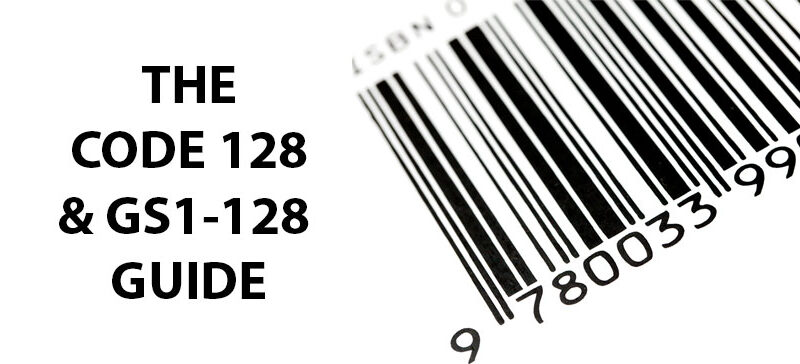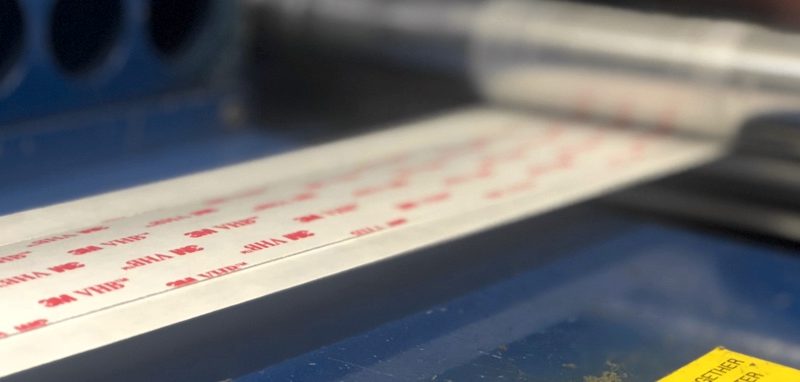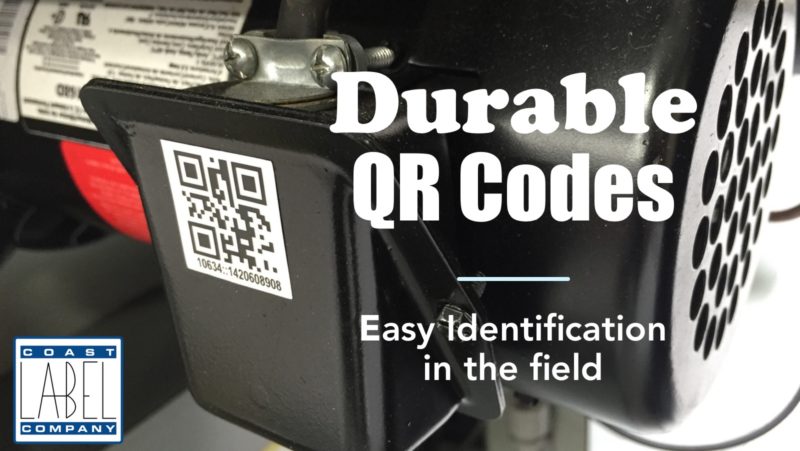From retail stores and warehouses to logistics and healthcare, barcodes are integral to daily life. One of the most widely used and versatile formats is the Code 128 barcode. Although simple, Code 128 barcodes offer a powerful solution that lets you encode alphanumeric (numbers and letters) data into a visually scannable form. They can be found almost anywhere you go, from product labels in stores to patient ID wristbands. Another common barcode format is GS1-128. This format is a version of Code 128. However, it has one unique difference: GS1-128 can encode multiple pieces of information.
Understanding the intricacies of Code 128 barcodes and GS1-128 can help you determine which barcode format is right for your specific application. This guide will provide you with the info you need to get started with Code 128 barcodes. By the end, you’ll have a solid understanding of Code 128 barcodes as well as GS1-128 so you can harness their potential.
What is Code 128?
The history of Code 128 dates back to 1981, when it was developed by Computer Identics Corporation (now part of Honeywell) as a high-density barcode symbology (kind of like a language but for barcodes). The main goal was to create a flexible barcode that could encode a wide range of characters while still remaining compact. Code 128 was designed to overcome the limitations of earlier barcode symbologies.
Today, Code 128 is still widely used. Because of its versatility and high data density, it’s used just about everywhere, from retail to logistics. Code 128 barcodes can encode the full ASCII character set, including uppercase letters, lowercase letters, numbers, and special symbols. It allows for variable-length data encoding, which essentially means the length of the barcode can vary, depending on the amount of information. Plus, Code 128 barcodes are known for their readability and reliable scanning. They can be scanned with either a regular barcode scanner or a smartphone with a barcode app.
Code 128 barcodes are made up of four components: a start code, data characters, a check digit, and a stop code. The start code indicates the beginning of the barcode, the data characters represent the information being encoded, the check digit helps catch errors, and the stop code marks the end.
Code 128 Uses and Applications
Code 128 barcodes are super adaptable in how they can be used and what kind of information they can encode. Because of this, Code 128 is used in a variety of industries and sectors. Here are some of the main uses and applications of Code 128 barcodes:
Retail and inventory management
Code 128 barcodes are commonly used in retail settings to track and manage inventory. They allow retail stores to easily control stock levels, price products, and make the checkout process faster. By placing barcodes on product labels, cashiers and other employees can easily scan and identify items with less chance for human error.
Logistics and supply chain
Code 128 barcodes play a crucial role in the logistics and supply chain industry. They are used on shipping containers, packages, and pallets to enable automated sorting, tracking, and delivery. Because barcodes provide real-time visibility as the goods move through the supply chain, the transportation process is more efficient and inventory levels are easier to optimize.
The E-Commerce Logistics Guide
Healthcare
From the doctor’s office to the hospital, Code 128 barcodes are used for patient identification, medication management, and medical equipment tracking. For example, most hospitals use barcoded patient wristbands. Before any sort of treatment is delivered, the barcode is scanned, which helps reduce medical errors. Additionally, medications and medical supplies are labeled with barcodes to track inventory levels in real time and enhance the safety of patients.
Pharmaceutical
Code 128 barcodes play a crucial role in the pharmaceutical industry. In fact, FDA regulations require the use of barcodes to ensure the safety of patients. Code 128 barcodes are commonly used to label medications, vaccines, and medical supplies. Each product is assigned a unique barcode that contains essential information. Code 128 barcodes help in maintaining traceability so that specific batches can be recalled if necessary, protecting the health of patients. Plus, by scanning barcodes on medication packaging, pharmacists and pharmacy technicians can accurately track and monitor stock levels to prevent under or overstocking.
Libraries
Code 128 barcodes are widely used in libraries and document management systems. Barcodes on books, journals, and documents allow easy cataloging, tracking, and check-in/check-out processes. Libraries use barcode scanners to quickly identify and find items for library patrons.
Manufacturing and warehousing
Code-128 barcodes are instrumental in manufacturing and warehousing environments. They are applied to raw materials, components, and finished products, which enables accurate tracking, quality control, and inventory management. Barcode scanning systems automate data capture, which reduces manual entry and improves efficiency in production lines and warehouse operations.
Asset management
Assets are some of the most important resources for your company. Many organizations use Code 128 barcodes to track and manage their assets, such as equipment, computers, tools, and vehicles. Each asset receives a unique barcode for streamlined asset ID and tracking. This helps optimize the use of assets and reduce the loss and theft of assets.
Access control
Another common use of Code 128 barcodes is for security and access control. Code 128 barcodes are used in ID cards, access badges, and tickets for secure access control systems. These barcodes contain encrypted information that can be quickly scanned and authenticated, granting or restricting access to designated areas, such as a lab, or events, such as a concert.
How to Identify Code 128 Barcodes
To the untrained eye, all one-dimensional barcodes look pretty much the same. While most linear barcodes use black and white lines to encode data, they each rely on a different symbology to function. So how can you identify a Code 128 Barcode?
The easiest and simplest way is to use a barcode scanner or a barcode reader app on your phone. Using a barcode identification app, you can scan the barcode to determine which barcode symbology is being used.
Code 128 barcodes will have the following components:
- Start code: This indicates the beginning of the barcode. There are three different characters that can be used as the start code, CODE-A, CODE-B, and CODE-C. These tell the reader which characters will be used in the barcode. For example, if CODE-C is used, 2-digit numbers can be represented with one bar, which allows for a lot of data to be used in a small space.
- Data characters: This is the meat and potatoes of the Code 128 barcode. These characters encode the necessary data.
- Check digit: The check digit helps prevent errors. Typically, the digit is calculated by using an algorithm called the Modulo 103. This makes sure the barcode was properly formatted.
- Stop code: This tells the reader when the barcode ends. In Code 128, the stop code consists of three bars followed by three spaces. These bars and spaces have specific widths and ratios based on the barcode specifications.
What Is GS1-128?
GS1-128, which used to be called UCC/EAN-128, is a variant of the Code 128 barcode symbology. It’s part of the GS1 system, which is a global standard for barcodes and identification systems used in various industries. GS1-128 barcodes are designed to encode structured data according to GS1 standards. Essentially, GS1-128 can include additional information besides the basic product serial number. Some of the information GS1-128 barcodes might use include batch numbers, expiration dates, serial numbers, and other relevant information.
GS1-128 uses the Code 128 symbology, which includes numbers, uppercase letters, and special symbols. It can encode variable-length data and includes start codes, data characters, check digits, and stop codes. GS1-128 also has additional components, including AIs and FNC-1, which tells the barcode reader that GS1-128 is being used.
GS1-128 barcodes are usually longer than standard Code 128 barcodes. That’s because they use Application Identifiers (AIs) within the structure of the barcode. AIs are numerical prefixes that indicate the type of data that follows, such as batch/lot number or production date. They help define the meaning and format the encoded data. Multiple AIs can be used within one barcode. For example, you might have one AI to indicate the delivery container code, followed by the data, a second to indicate the validity of the quality, followed by the data, and a third AI to indicate quantity, followed by the data.
The GS1-128 barcode format is used in many industries for labeling and tracking products, especially those that require traceability. Because the format is globally standardized, different organizations and trading partners across the world are able to use GS1-128 barcodes without any issues.
The Code 128 and GS1-128 Guide
GS1-128 Uses and Applications
With their ability to encode structured data, GS1-128 barcodes are used by many different industries. Here are some common uses and applications of GS1-128 barcodes:
- Retail: GS1-128 barcodes are widely used in retail for product identification, inventory management, and point-of-sale operations. With these barcodes, retail stores are able to easily keep track of stock and quickly scan products for check-out.
- Healthcare and pharmaceuticals: GS1-128 barcodes play an important role in the healthcare sector. They are used to label pharmaceutical products, medical devices, and hospital supplies, providing essential information like expiration dates.
- Logistics and supply chain management: Logistics and supply chain operations rely heavily on GS1-128. These barcodes help identify and track individual shipping containers, pallets, and cartons. With real-time data provided by the barcodes, inventory management, picking and packing, and tracing of goods are more efficient and accurate.
- Manufacturing: Manufacturing environments use GS1-128 barcodes to track work-in-progress items and components. These barcodes make production control and quality assurance more efficient and help companies stick to production schedules.
- Warehouse management: GS1-128 barcodes are used in warehouse management systems to optimize storage, picking, and distribution. By labeling products, racks, and bins with these barcodes, warehouses improve order accuracy and streamline inventory control.
- Food and beverage industry: In the food and beverage industry, GS1-128 barcodes are critical. Because the barcodes provide information about when the products were made, where they were made, and when they expire, food and beverage organizations can ensure the quality and safety of products.
- Automotive and aerospace: The automotive and aerospace industries use GS1-128 barcodes for component tracking, inventory management, and traceability. Parts and components are barcoded for efficient supply chain management, maintenance, and compliance with industry regulations.
Learn About Medical Device Labels
How to Identify GS1-128
Both Code 128 barcodes and GS1-128 use the same symbology and can encode the full ASCII character set. So how do you identify GS1-128? The simplest way is with a barcode reader. Any barcode reader that can read Code 128 barcodes can also read GS1-128. A barcode identifier application can help you definitively identify the type of barcode being used.
GS1-128 barcodes always have the following components:
- Start code: This tells the reader where the barcode starts.
- FNC-1 character: This character indicates that the barcode uses GS1-128, helping distinguish it from standard Code 128 barcodes.
- Application Identifier: This is a number that tells the reader what type of data follows. Multiple AIs can be included in a single barcode.
- Data characters: This is the data that’s been encoded in the barcode.
- Check digit: The check digit helps ensure the accuracy of the data.
- Stop code: This tells the barcode reader where the barcode ends.
Code 128 Barcode Labels from Coast Label
Both Code 128 barcodes and GS1-128 are reliable and versatile solutions for many industries. Whether you need to encode simple data, such as a product serial number, or many pieces of data, these barcodes can help you streamline your inventory management, improve the accuracy of your data capture, and increase your efficiency.
When it comes to printing Code 128 barcodes, you need a company that cares as much about quality as you do. At Coast Label, we take pride in manufacturing high-quality barcode labels. With our expertise and state-of-the-art printing technology, we guarantee the barcodes are precise, scannable, and durable. We understand the critical role that accurate barcode labeling plays in your business. We work with you one-on-one to understand your unique needs and to engineer custom-label solutions that meet the highest of standards.



